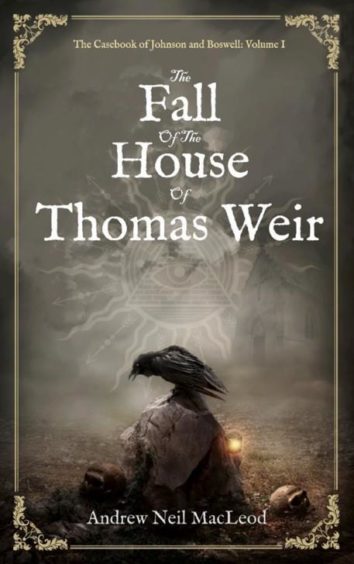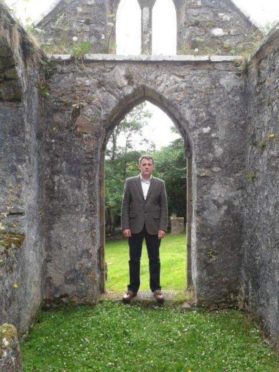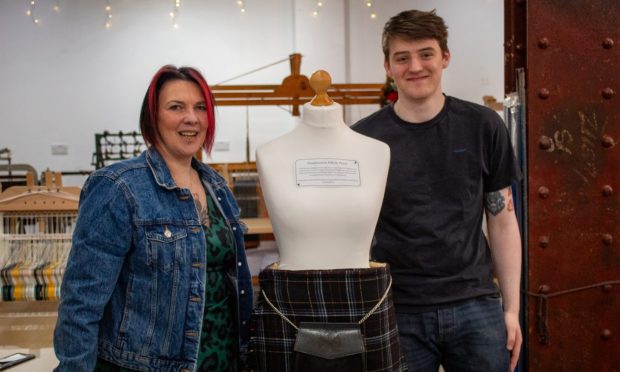For Andrew MacLeod, growing up in Glasgow with a childhood rooted in his family’s island heritage has fuelled a love of writing and storytelling.
His latest novel, The Fall of the House of Thomas Weir turns to Edinburgh during the Enlightenment for its inspiration. “Although I was born and raised in Glasgow, I’ve been in love with Edinburgh all my life,” explains Andrew, “it really is an incredibly vibrant city, rich in history and legend. Even the most sceptical of visitors must admit there’s something eerie about all those winding back streets, gothic cemeteries and underground passages. All I had to do was take Edinburgh’s haunted history—the premature burials, the witch burnings, the grave robberies, the grisly tales of cannibalism—and find some thread or central premise to bring it all together.
“Enter Major Thomas Weir, AKA the Warlock of West Bow, whose derelict house lingers on as a conduit for all things unwholesome in the city.”

Andrew believes that he inherited his love of storytelling from his grandfather Calum who he describes as, “grandpa Calum was a big man from the Isle of Raasay. The Gaels have a very oral tradition of storytelling, and my grandfather was no different. As he worked he would recite his own poetry, teach me snatches of Gaelic, or songs he remembered from his childhood. It was from my grandfather I learned of his namesake, his first cousin Calum MacLeod, who built the two-mile stretch of road on the island using only a pick, a shovel, a wheelbarrow and his bare hands.”
Trips to his ancestral home fuelled Andrew’s appetite for the history of the place and, when he moved with his wife to another Scottish isle. “We moved to Rothesay on Bute with no devices, and no hot water, which my wife still hasn’t forgiven me for. Armed only with a handful of Ikea pencils and three note books, I set to work. I wrote through the night, fuelled on a diet of fish suppers and wine. During the day, when I wasn’t sanding floors or stripping wallpaper, I would be down in the local library conducting research, or walking on the beach as I planned the whole series in my head.”
The first book in the series is The Fall of the House of Thomas Weir, and Andrew felt that his beloved Edinburgh was the perfect place for the drama to unfold; “A lot of gothic fiction centres around Victorian London, which is great,” he says, “but I knew from the beginning I wanted to go somewhere different. Enlightenment-era Edinburgh is such a perfect place to set a supernatural thriller, but for some reason it’s very poorly represented in fiction.”
His central characters are two famous Scots, Dr Johnson and Boswell. “I had always been fascinated by Johnson and Boswell’s tour of the Hebrides,” he explains, “Doctor Johnson, a polymath who wrote the first proper English dictionary (think 18th century Stephen Fry) was notoriously scathing of the Scots, while his great friend and biographer, James Boswell, was a Scottish patriot.
“It’s such an ‘odd-couple’ pairing that the bickering dialogue almost wrote itself. The key to the whole book, though, lay in a single phrase I found in a Sherlock Holmes story, A Scandal in Bohemia, where Holmes exclaims to Watson: ‘I am lost without my Boswell!’ This, together with Johnson and Boswell’s very real fascination with the occult, led to my eureka! moment. I would reinvent the pair as a kind of 18th century Holmes and Watson, traveling the length and breadth of supernatural Scotland to unravel her mysteries.”
The title character, Thomas Weir is representative of the duplicity that Andrew feels is a common theme in, “the annals of Edinburgh’s underworld.” In fact, says the writer, “my novel is full of such characters, “Deacon Brodie, the inspiration behind R.L. Stevenson’s Jekyll and Hyde, was a skilled craftsman and upstanding member of society by day, but by night the mask came off. No sin was too great or too small.
“As the hub of enlightenment the city stood as a beacon of reason and justice. However in the vaults and tunnels underneath a very different face emerges, a face deformed with leprosy and covered in plague sores. A face from the shadows.”
This isn’t a story for the faint-hearted but fans will be pleased to hear that there are two more tales from The Casebook of Johnson and Boswell in the pipeline and plenty more brewing in Andrew’s imagination.
The Fall of the House of Thomas Weir by Andrew MacLeod is available now, £8.99.










